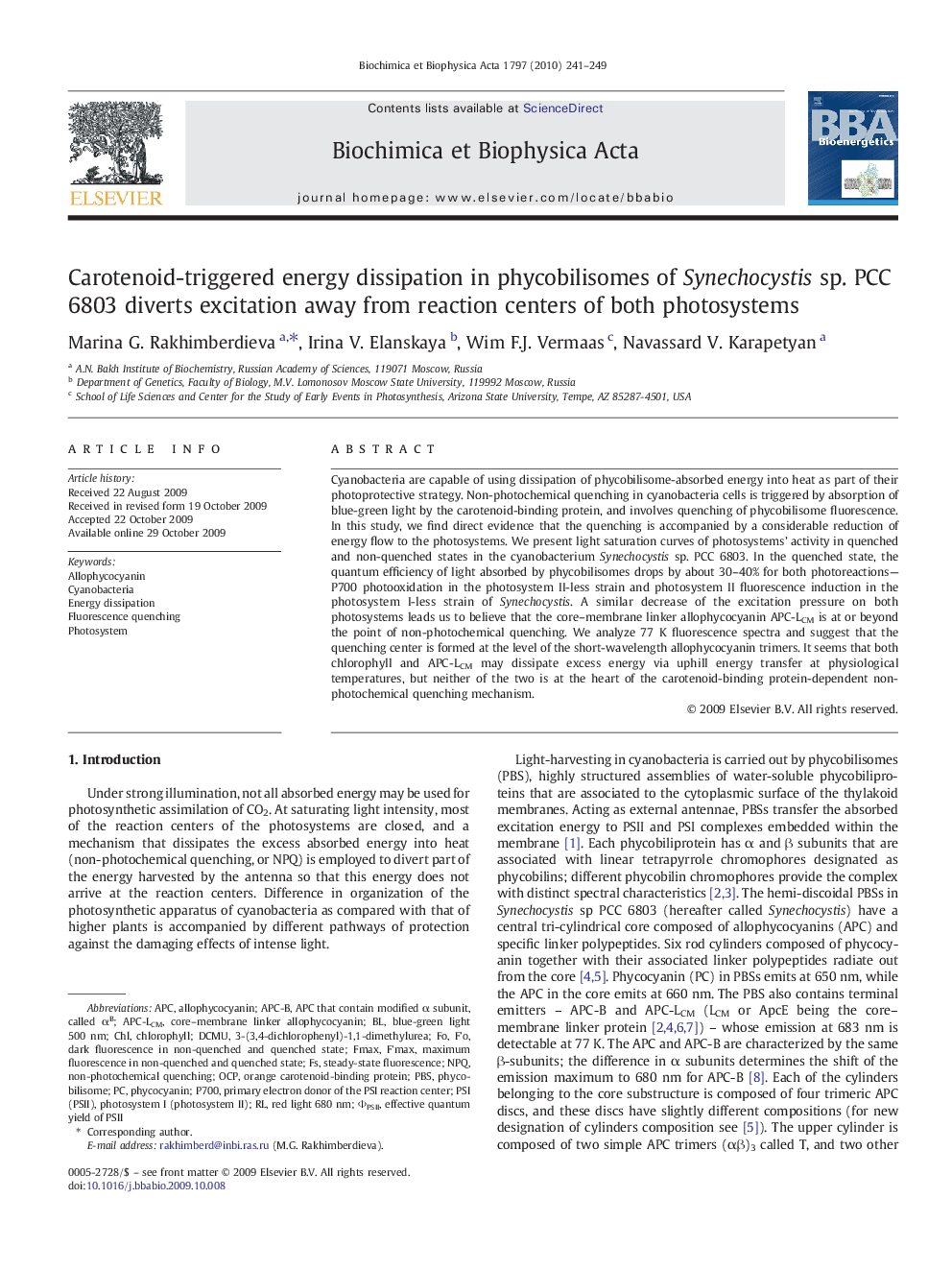| Article ID | Journal | Published Year | Pages | File Type |
|---|---|---|---|---|
| 10795967 | Biochimica et Biophysica Acta (BBA) - Bioenergetics | 2010 | 9 Pages |
Abstract
Cyanobacteria are capable of using dissipation of phycobilisome-absorbed energy into heat as part of their photoprotective strategy. Non-photochemical quenching in cyanobacteria cells is triggered by absorption of blue-green light by the carotenoid-binding protein, and involves quenching of phycobilisome fluorescence. In this study, we find direct evidence that the quenching is accompanied by a considerable reduction of energy flow to the photosystems. We present light saturation curves of photosystems' activity in quenched and non-quenched states in the cyanobacterium Synechocystis sp. PCC 6803. In the quenched state, the quantum efficiency of light absorbed by phycobilisomes drops by about 30-40% for both photoreactions-P700 photooxidation in the photosystem II-less strain and photosystem II fluorescence induction in the photosystem I-less strain of Synechocystis. A similar decrease of the excitation pressure on both photosystems leads us to believe that the core-membrane linker allophycocyanin APC-LCM is at or beyond the point of non-photochemical quenching. We analyze 77 K fluorescence spectra and suggest that the quenching center is formed at the level of the short-wavelength allophycocyanin trimers. It seems that both chlorophyll and APC-LCM may dissipate excess energy via uphill energy transfer at physiological temperatures, but neither of the two is at the heart of the carotenoid-binding protein-dependent non-photochemical quenching mechanism.
Keywords
Related Topics
Life Sciences
Agricultural and Biological Sciences
Plant Science
Authors
Marina G. Rakhimberdieva, Irina V. Elanskaya, Wim F.J. Vermaas, Navassard V. Karapetyan,
